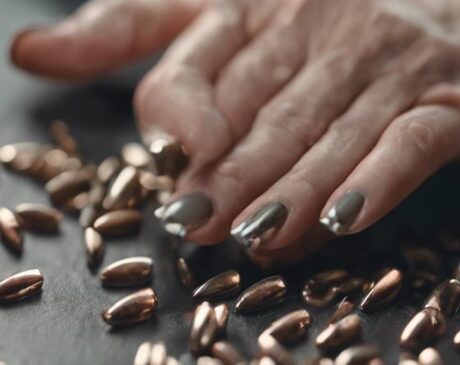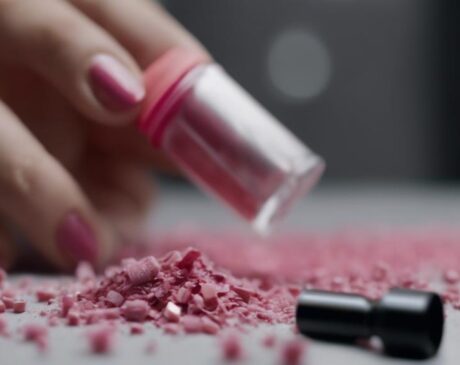Are Nail Salons Bad for Your Health?
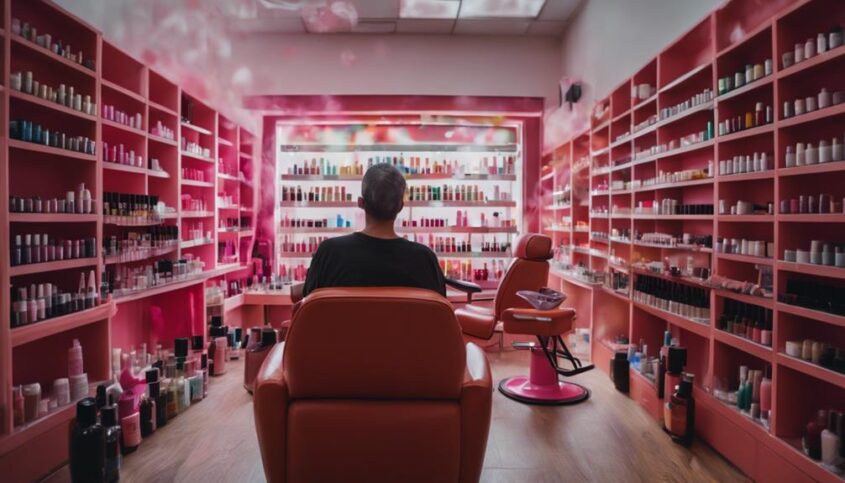
Frequent visits to nail salons can pose health risks. Exposure to toxic nail polish chemicals like formaldehyde and toluene can lead to respiratory issues and skin irritation. Shared tools increase infection risks, necessitating proper sanitation. Skin reactions from nail products can include allergies, which can be mitigated with hypoallergenic options. Poor indoor air quality in salons due to Volatile Organic Compounds can also cause health problems. To stay safe, research salon hygiene practices, consider personal tools, choose non-toxic products, and prioritize cleanliness. Remember, your health matters when visiting nail salons.
Key Takeaways
- Exposure to toxic chemicals in nail products can pose health risks.
- Shared tools at nail salons may lead to infections if not sanitized properly.
- Skin irritation and allergic reactions can result from nail product ingredients.
- Poor air quality in salons due to VOCs can impact respiratory health.
- To stay safe, research salon hygiene practices and opt for non-toxic products.
Chemical Exposure in Nail Polish
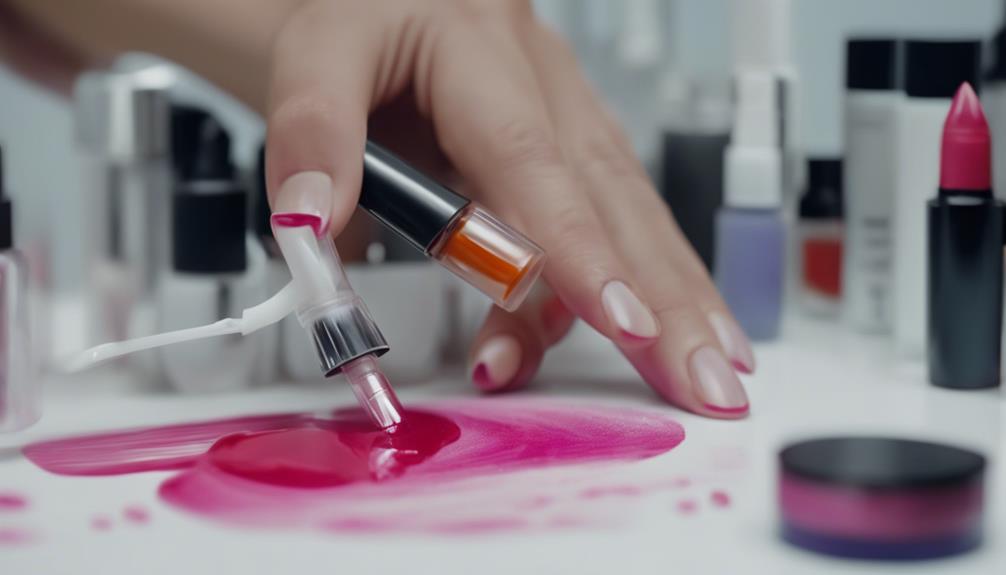
Exposure to chemicals present in nail polish poses a significant health concern for both nail salon workers and clients. Many conventional nail polishes contain toxic ingredients such as formaldehyde, toluene, and dibutyl phthalate, known as the "toxic trio." These chemicals have been linked to various health issues, including respiratory problems, skin irritation, and even cancer. As awareness of these risks grows, there is a rising demand for healthier, more environmentally friendly nail polish alternatives.
In response to these concerns, innovative nail polish brands have emerged, offering products that are free from harmful chemicals while still providing vibrant colors and long-lasting finishes. These brands use safer ingredients like water-based formulas, plant-based pigments, and non-toxic solvents to create nail polishes that are both high-performing and eco-friendly. By choosing these innovative nail polish options, both salon workers and clients can enjoy beautiful manicures without compromising their health. As the beauty industry continues to evolve, prioritizing health and safety in nail care practices is becoming increasingly important.
Infection Risks From Shared Tools
Shared tools in nail salons can pose significant infection risks to both customers and salon workers if proper sanitation protocols are not strictly followed. The use of tools such as nail clippers, files, and buffers on multiple individuals can lead to the transfer of bacteria, fungi, and viruses. This can result in various infections, including fungal nail infections, bacterial infections, and even viral infections like warts.
To combat these risks, nail salons must implement stringent cleaning and disinfection practices. Tools should be thoroughly cleaned with soap and water, then disinfected using hospital-grade solutions or autoclaving methods. Disposable tools or tools that can be properly sterilized should be used whenever possible to minimize the risk of cross-contamination.
Innovations in tool sterilization, such as UV sterilization cabinets and single-use disposable tool kits, are emerging to address these concerns. Customers should also be vigilant and inquire about the salon's sanitation practices before getting a manicure or pedicure to ensure a safe and hygienic experience.
Skin Irritation and Allergic Reactions
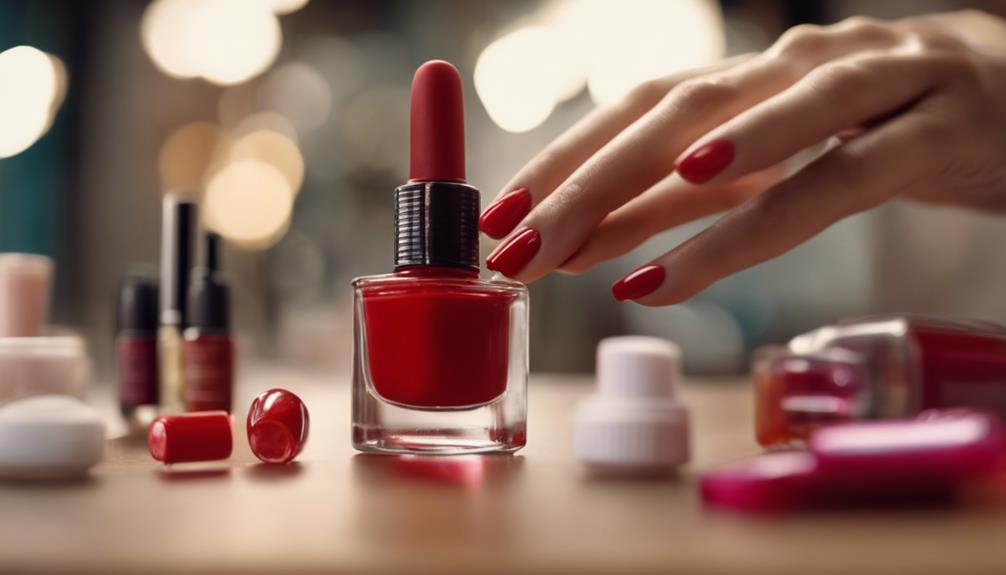
Skin irritation and allergic reactions are common concerns associated with nail salon services, often stemming from exposure to certain chemicals and ingredients in nail products. While nail treatments can enhance beauty, it's essential to be mindful of potential skin reactions. Here are four innovative ways to mitigate skin irritation and allergic reactions in nail salons:
- Use of Hypoallergenic Products: Opt for nail salons that offer hypoallergenic nail products free from common allergens like formaldehyde, toluene, and dibutyl phthalate.
- Patch Testing Services: Implement patch testing services before the full application of nail products to identify any potential allergic reactions beforehand.
- Ventilation Systems: Install advanced ventilation systems in nail salons to reduce the concentration of chemicals in the air, minimizing the risk of skin irritation.
- Education and Training: Provide comprehensive education and training to nail technicians on recognizing allergic reactions and implementing appropriate safety measures to protect clients' skin health.
Air Quality Concerns in Salons
Indoor air quality in nail salons is a critical aspect of occupational health and safety, directly impacting both clients and salon staff. The use of various nail products such as polishes, adhesives, and removers can release harmful chemicals into the air, contributing to poor indoor air quality. Volatile organic compounds (VOCs) are common culprits found in many nail salon products, known to cause respiratory irritation, headaches, and dizziness. Additionally, exposure to chemicals like formaldehyde and toluene, which are often present in nail products, can have long-term health effects.
To address air quality concerns in salons, innovative ventilation systems and air purifiers can be implemented to reduce the concentration of airborne contaminants. Proper ventilation helps to remove pollutants from the air, creating a healthier environment for both clients and salon employees. Furthermore, using low-VOC or VOC-free nail products and ensuring adequate airflow within the salon can significantly improve indoor air quality. By prioritizing air quality in nail salons, we can create safer and more health-conscious spaces for everyone involved.
Tips for Safer Salon Visits
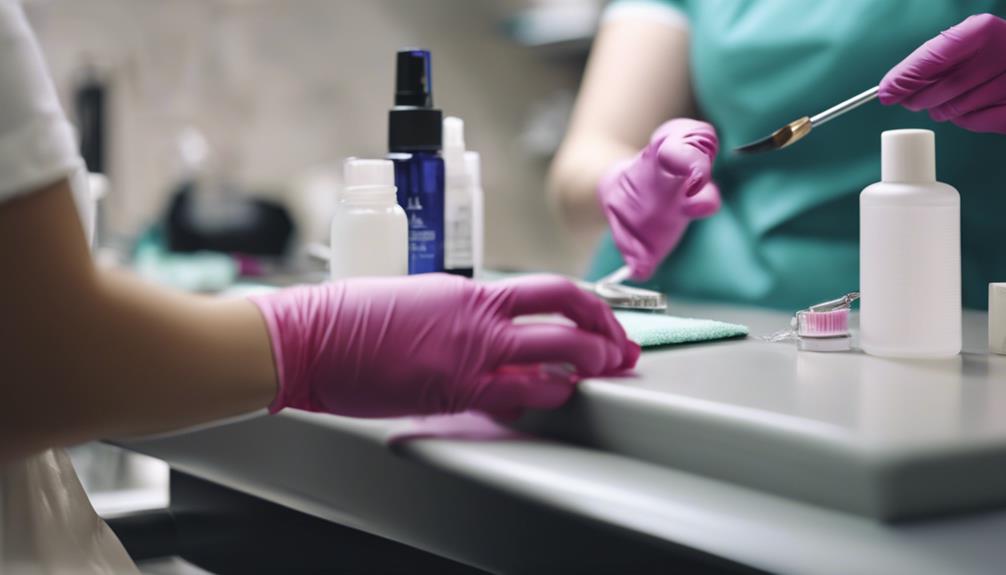
Given the importance of maintaining a healthy environment in nail salons, it is essential to consider practical tips for ensuring safer salon visits. To enhance your salon experience and prioritize your health, here are four innovative tips to keep in mind:
- Research Salon Practices: Before booking an appointment, research the salon's practices regarding hygiene, ventilation, and product safety. Opt for salons that prioritize cleanliness and follow proper sanitation protocols.
- Bring Your Own Tools: Consider bringing your own nail tools to the salon to reduce the risk of infection. Personal tools can help prevent cross-contamination and ensure that only sanitized equipment touches your nails.
- Choose Non-Toxic Products: Opt for salons that offer non-toxic and low-odor nail products. These alternatives are safer for both clients and salon workers, reducing exposure to harmful chemicals.
- Limit Frequency of Visits: While getting regular manicures is enjoyable, limiting the frequency of salon visits can help reduce exposure to potentially harmful chemicals and minimize the risk of developing nail-related health issues.
Frequently Asked Questions
How Often Should I Replace My Nail Polish to Reduce Chemical Exposure?
To minimize chemical exposure, replace nail polish every 12-24 months. Over time, ingredients can degrade, potentially increasing risks. Regularly inspect polish for changes in texture or odor, as these may indicate deterioration.
Can Using Nail Polish Remover With Acetone Increase the Risk of Infection From Shared Tools?
The use of nail polish remover with acetone in shared nail tools may indeed increase the risk of infection. Acetone can strip the natural oils from nails, making them more susceptible to damage and infection.
Are Certain Ingredients in Nail Polish More Likely to Cause Skin Irritation or Allergic Reactions?
Certain ingredients in nail polish can lead to skin irritation or allergic reactions. Common culprits include formaldehyde, toluene, and dibutyl phthalate. Opt for nail polishes labeled as "3-free" or "5-free" to reduce the risk of adverse reactions.
What Steps Can Nail Salons Take to Improve Air Quality and Reduce Exposure to Harmful Fumes?
Nail salons can enhance air quality and mitigate exposure to harmful fumes by investing in proper ventilation systems, using low-VOC products, offering organic alternatives, implementing regular air quality assessments, and providing staff with training on chemical safety protocols.
Are There Any Specific Precautions Individuals With Respiratory Conditions Should Take When Visiting a Nail Salon for a Manicure or Pedicure?
Individuals with respiratory conditions visiting nail salons for manicures or pedicures should consider wearing a mask to reduce inhalation of potentially harmful fumes. Proper ventilation and scheduling visits during off-peak hours can also help minimize exposure risks.


